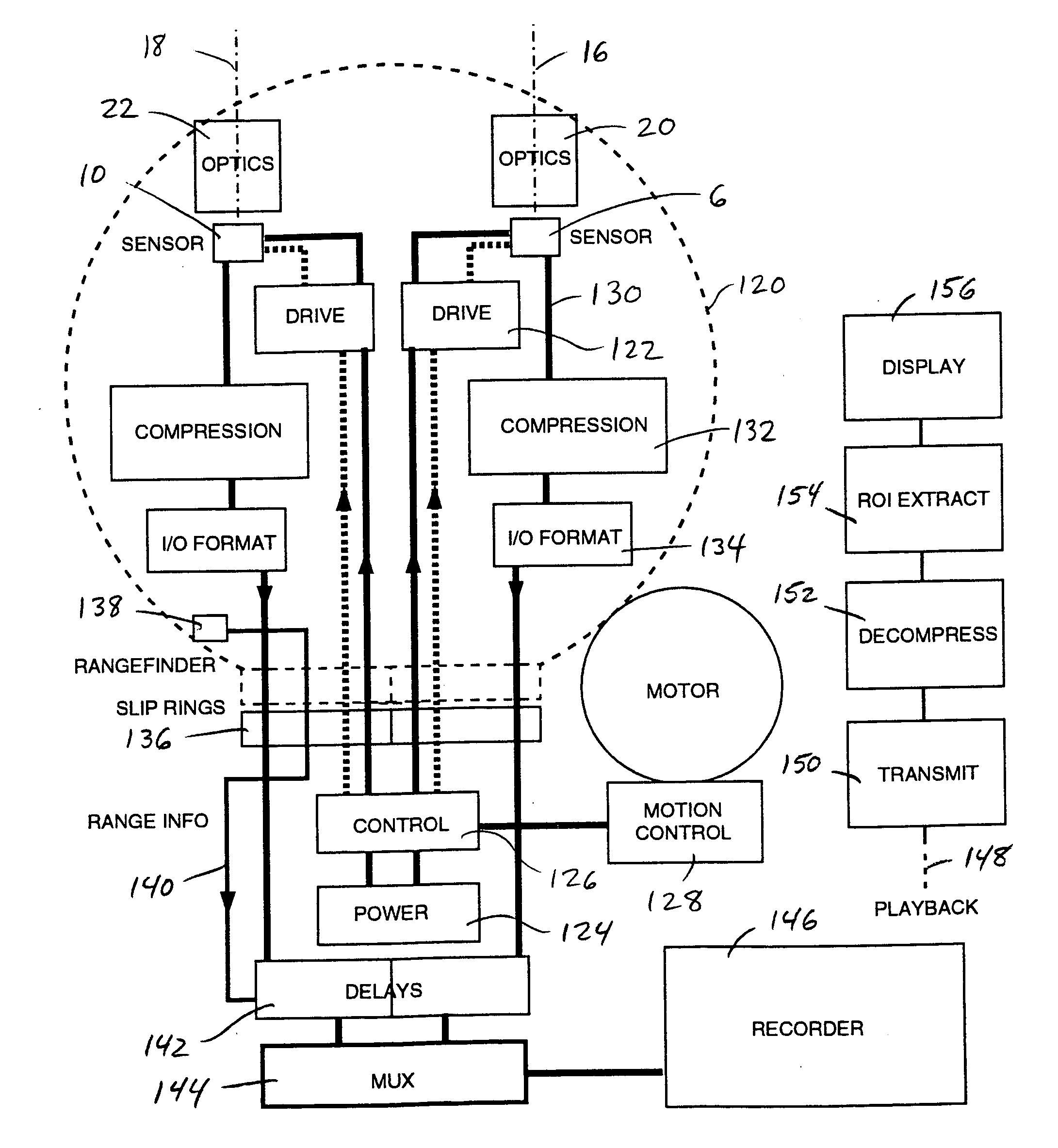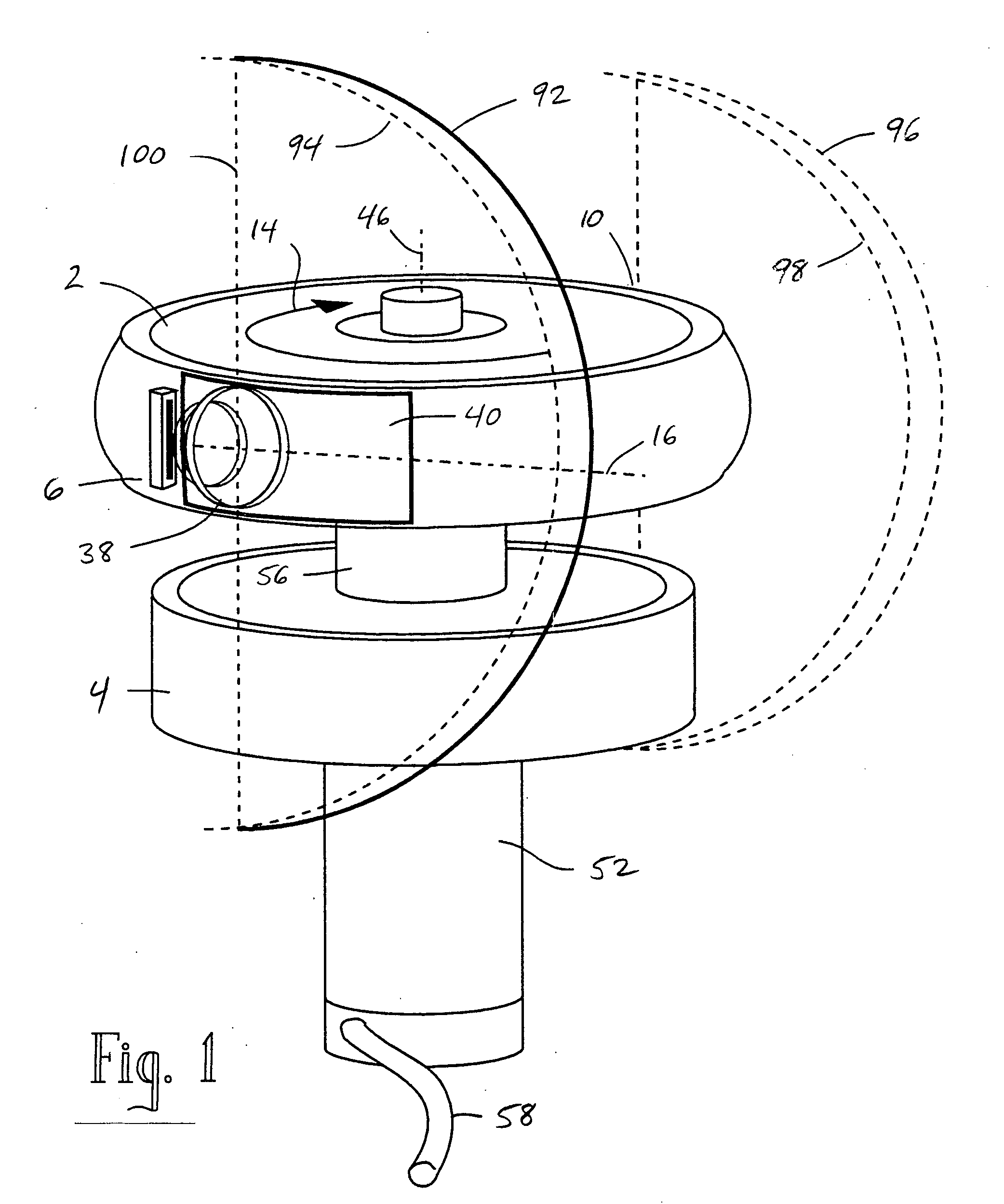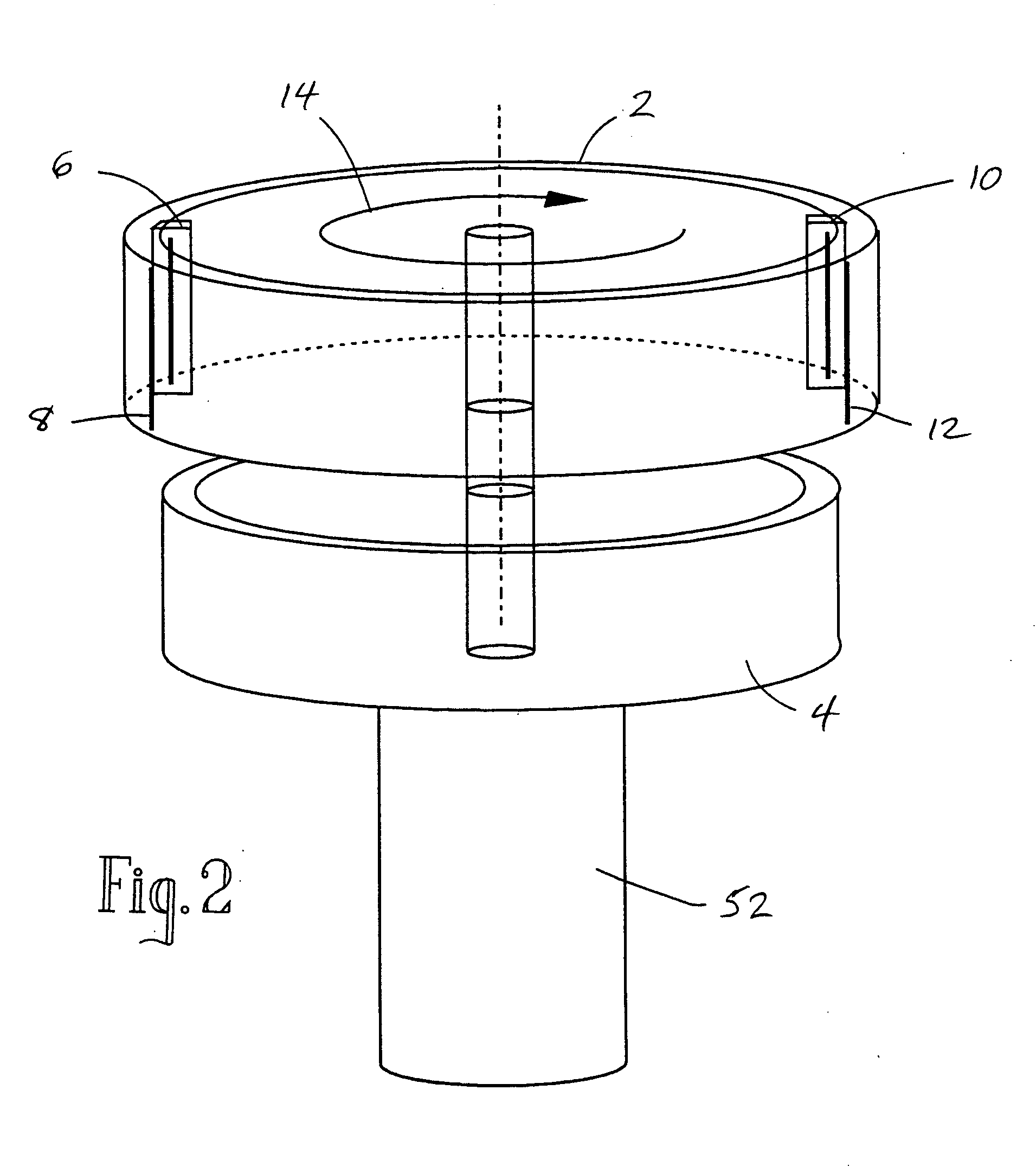Rotating scan camera
a scanning camera and rotating technology, applied in the field of panoramic image reproduction system, can solve the problems of inability to solve, inability to describe counter-rotation optics, and add significant weight and complexity to the device, so as to improve the resolution of the recorded image, improve the light sensitivity of the recording device, and improve the resolution
- Summary
- Abstract
- Description
- Claims
- Application Information
AI Technical Summary
Benefits of technology
Problems solved by technology
Method used
Image
Examples
Embodiment Construction
[0036] A rotary scanning camera of a novel design offers improved performance in capturing a panoramic surrounding scene. One or more line-scan sensors are used in a sweeping recording of a surrounding scene. The scan can be of a partial rotation or of one or more full rotations. Unlike most of the prior art, these sensors each have an optical axis that does not intersect the axis of rotation.
[0037] In the preferred embodiment, a rotating drum holds two or more line-scan devices for scanning the appearance of a surrounding field of view from stereoscopically separated viewpoints, with each optical axis on approximately a tangent line to the cylinder. This creates a pair of offset sweeping scans that record objects in the surrounding view from one, then the other, point of view, thereby creating an effective parallax separation in the recorded images. This parallax separation is the same for every point in the rotation of the drum.
[0038]FIG. 1 shows an oblique view of the preferred...
PUM
 Login to View More
Login to View More Abstract
Description
Claims
Application Information
 Login to View More
Login to View More - R&D
- Intellectual Property
- Life Sciences
- Materials
- Tech Scout
- Unparalleled Data Quality
- Higher Quality Content
- 60% Fewer Hallucinations
Browse by: Latest US Patents, China's latest patents, Technical Efficacy Thesaurus, Application Domain, Technology Topic, Popular Technical Reports.
© 2025 PatSnap. All rights reserved.Legal|Privacy policy|Modern Slavery Act Transparency Statement|Sitemap|About US| Contact US: help@patsnap.com



